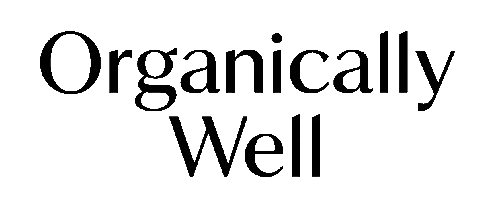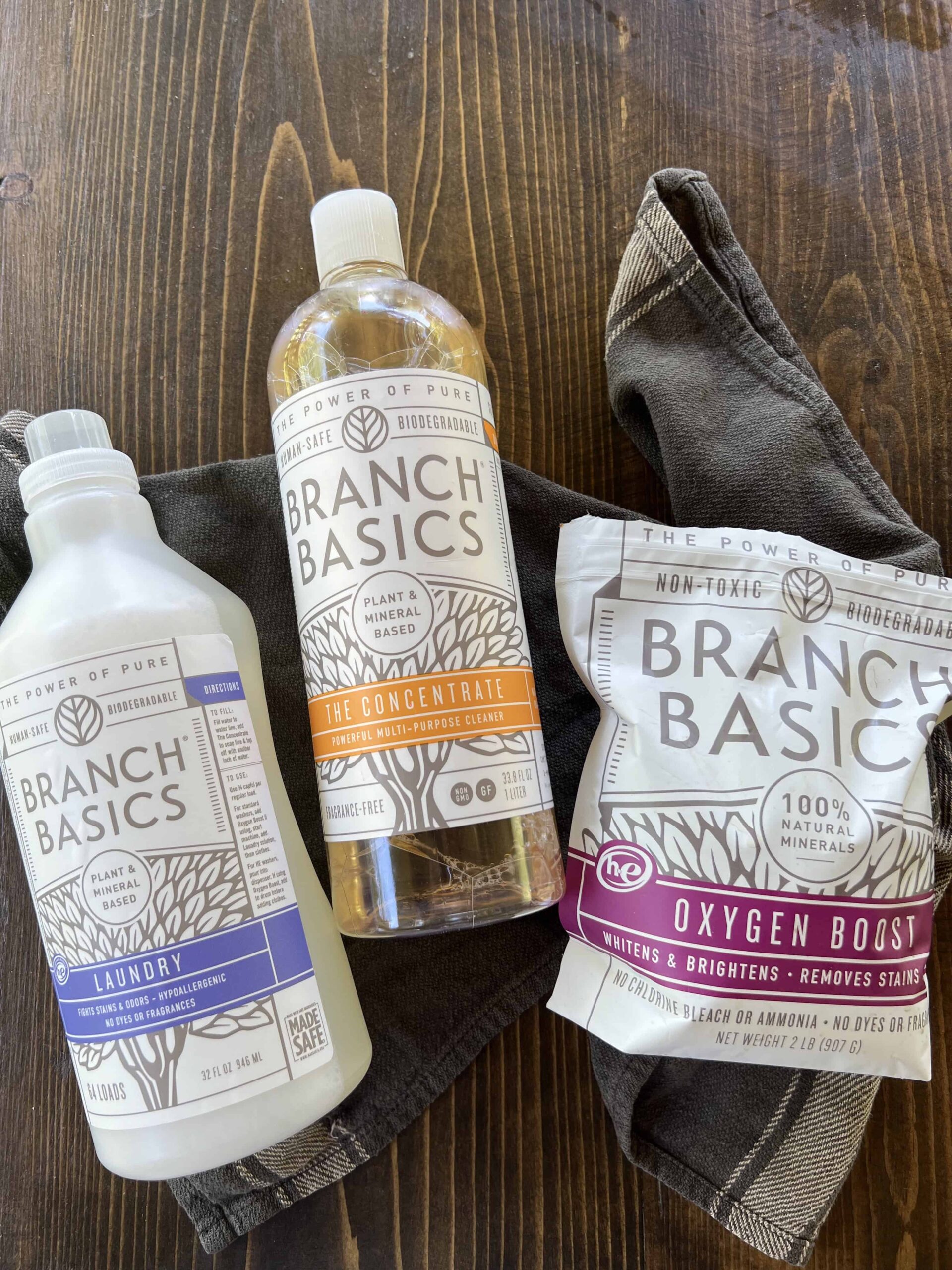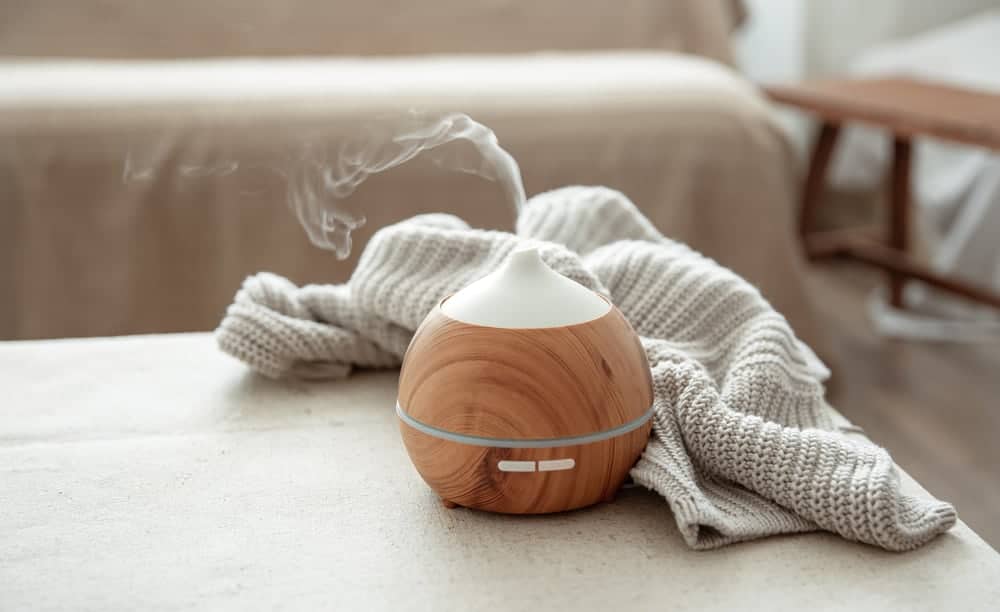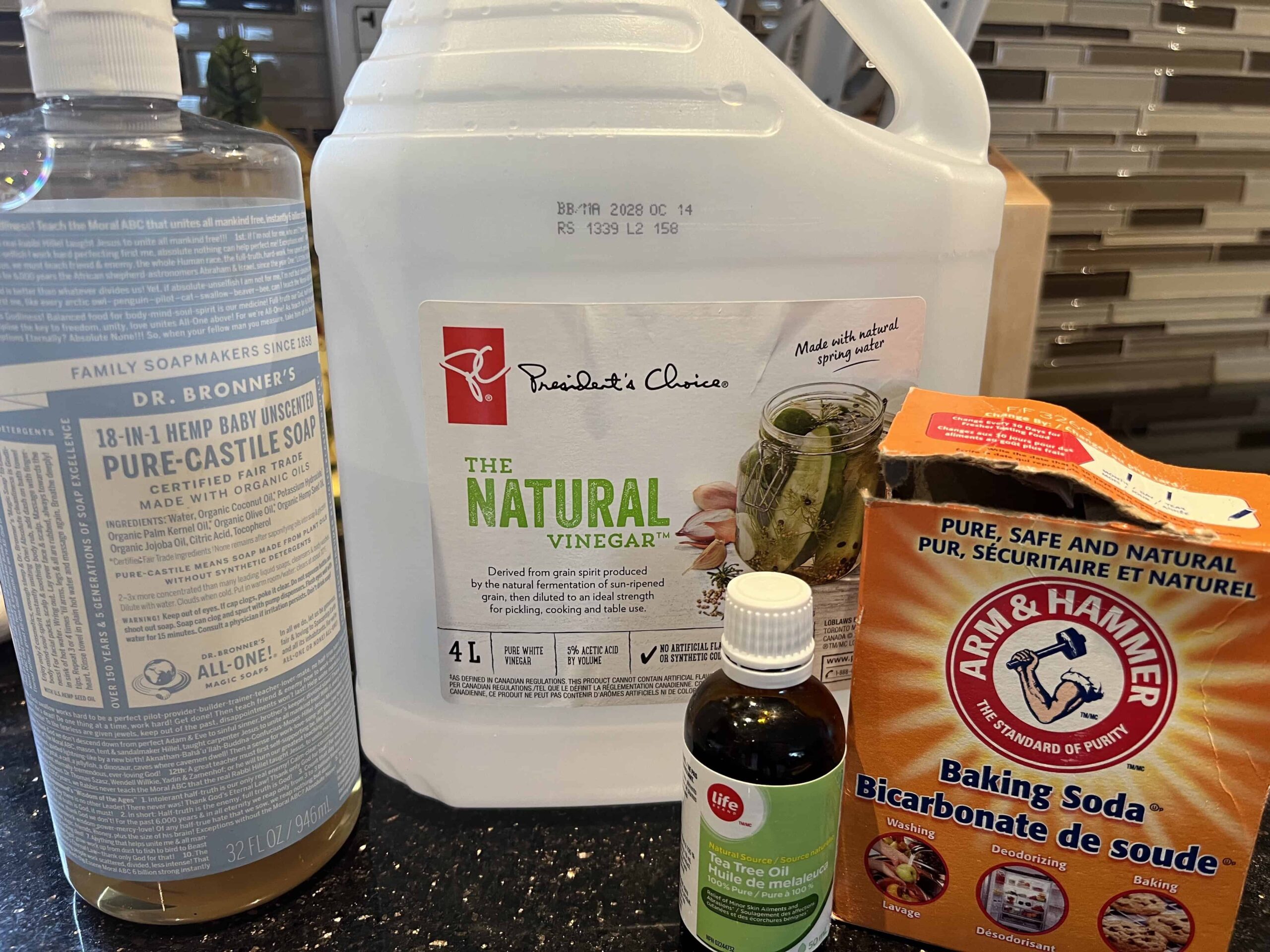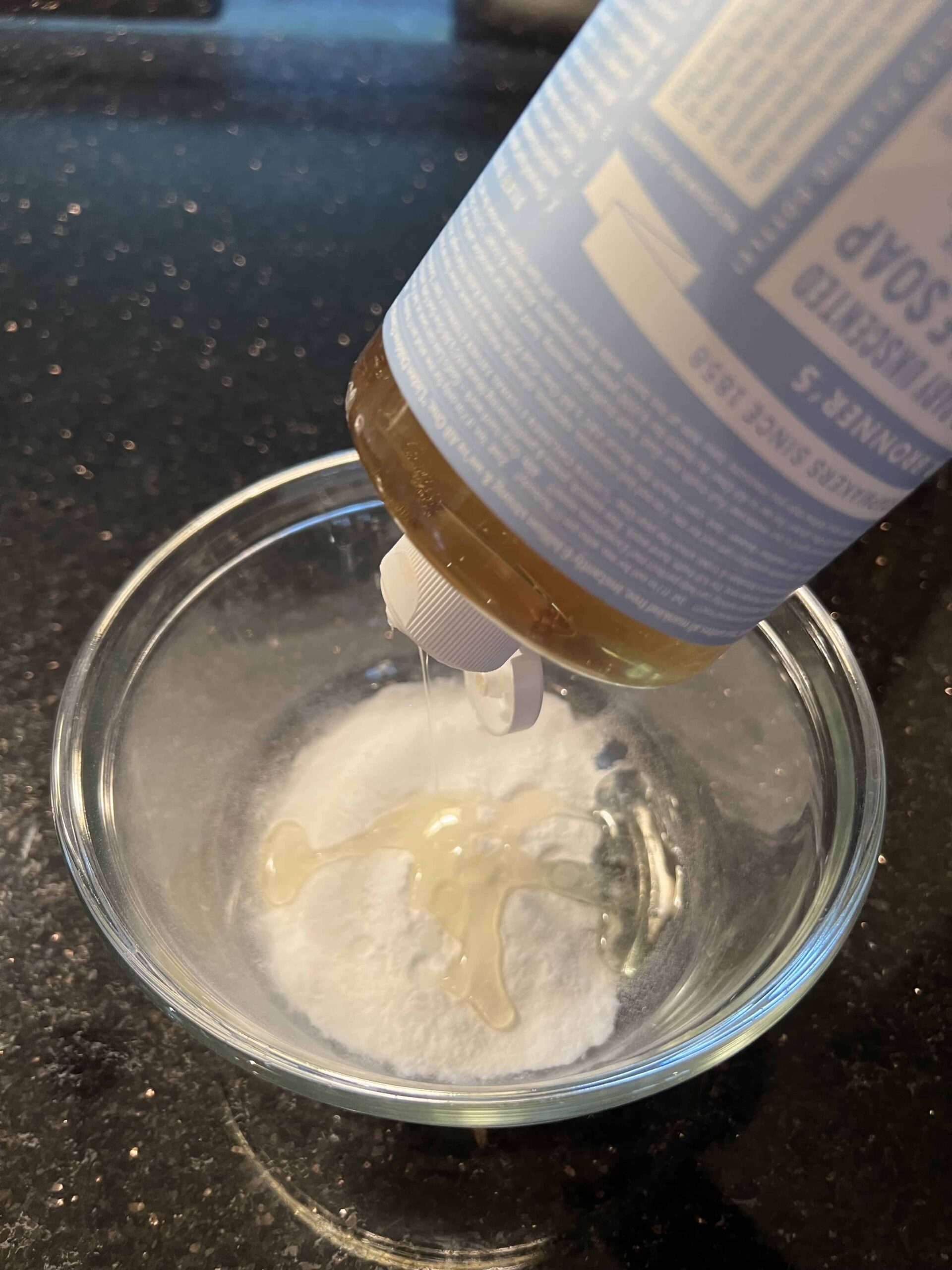How To Detox Your Home Room-By-Room
This post may contain affiliate links, which means I’ll receive a commission if you purchase through my links at no extra cost to you. Please read full disclosure for more information.
Your home should be a safe place to relax, enjoy and spend time with your loved ones. You shouldn’t have to worry about toxins in your home.
Unfortunately, toxins are everywhere these days. From harmful chemicals hiding in the air we breathe to those lurking in the products we use daily, the dangers are real.
These toxins can negatively impact our health, so creating a cleaner, more natural home environment is not just beneficial; it’s essential.
Follow this guide to detox your home room by room and create a safe, non-toxic home that supports your health.
Understanding Household Toxins
When I started my journey to reduce toxins in my home, I quickly realized how pervasive these chemicals are. It’s scary to discover that the same place where we seek comfort and safety can be littered with hidden dangers.
Household toxins lurk in the most unsuspecting places – from the cleaning products under our sinks to the very air we breathe, tainted by synthetic fragrances and volatile organic compounds.
Understanding household toxins isn’t just about identifying them; it’s about recognizing the ripple effect they have on our health and well-being. The link between long-term exposure to these toxins and a range of health issues has driven me, and undoubtedly many of you, to seek out natural home detox solutions.
By taking proactive steps to get rid of chemicals in our homes, we’re not only safeguarding our health but also cultivating a living environment that nurtures rather than harms.
What Are ‘Forever Chemicals’?
When I first heard about PFAS chemicals, also known as ‘forever chemicals,’ I was shocked to learn how they linger in our environment and bodies. These toxins are notorious for their ability to persist in the natural world without breaking down, making them permanent guests in our homes and lives.
PFAS can be found in a variety of everyday items, from non-stick cookware to waterproof clothing. The health risks associated with these chemicals are just as concerning, ranging from hormonal disruptions to increased cancer risk.
Figuring out how to reduce chemicals in my home became a priority because I want my home to be a safe, healthy space for my family. Identifying products containing these chemicals requires diligent label reading and a preference for natural home detox solutions.
Kitchen
Your kitchen can house a lot of hidden toxins. From plastics to mold to chemicals in your drinking water. Detoxing your kitchen is one of the most important places to start because it’s where you prepare, store and eat food!
Use Natural Cleaning products
I know getting rid of toxins in your home may sound like a hefty challenge, especially when it comes to cleaning products. Many of us have grown up with the idea that a clean home smells like bleach and disinfectants.
However, when detoxing your home, the first thing you need to do is throw out all commercial cleaning products. Common cleaning products such as toilet bowl cleaner, all-purpose spray, and dish soap are often loaded with harmful toxins, volatile organic compounds (VOCs), and artificial fragrances.
You definitely don’t want to be contaminating the air in your home with these toxins, which you will then be breathing all day!
Luckily, there are several great non-toxic cleaning brands out there that are just as effective without the negative health risks. Some of my absolute favourite staple brands include:
- Branch Basics
- Thieves by Young Living
Some non-toxic brands can get pricey, especially if you go through cleaning supplies super fast (kids? pets?). My philosophy is that everyone should be able to enjoy a safe, healthy, nontoxic home on any budget. So, if you don’t have the budget to spend extra money on safer cleaning products, don’t worry—there’s another option!
Make your own natural cleaning products!
I know what you’re probably thinking. Can DIY natural cleaning products clean as effectively as commercial products? They do!
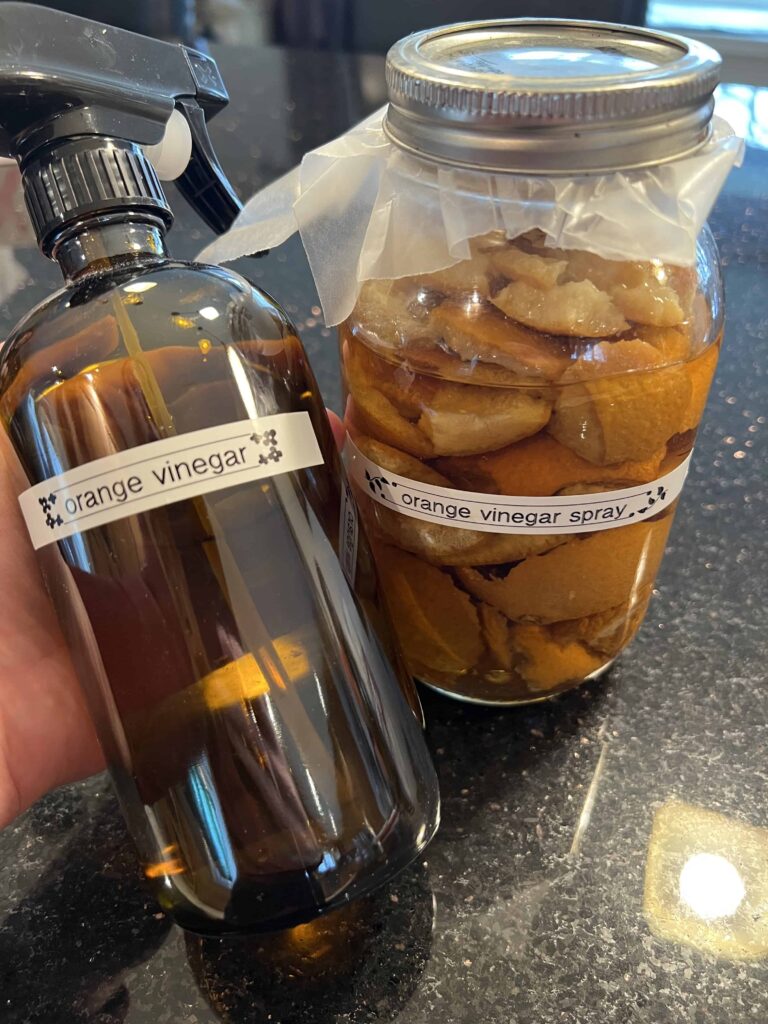
I have a really easy DIY orange vinegar cleaner recipe you can make from citrus peels and vinegar. It works for most surfaces, bathrooms, and floors—an easy (and cheap!) alternative for a non-toxic all-purpose spray.
Ditch Plastic
Plastic is absolutely everywhere these days. Fresh vegetables come wrapped in plastic packaging, food storage containers, water bottles, kitchen utensils, bowls—you name it! There is so much plastic.
But here’s the thing about plastic. At high temperatures, such as when you heat your lunch in a microwave, microplastics from your food container can leach into your food – which you then consume.
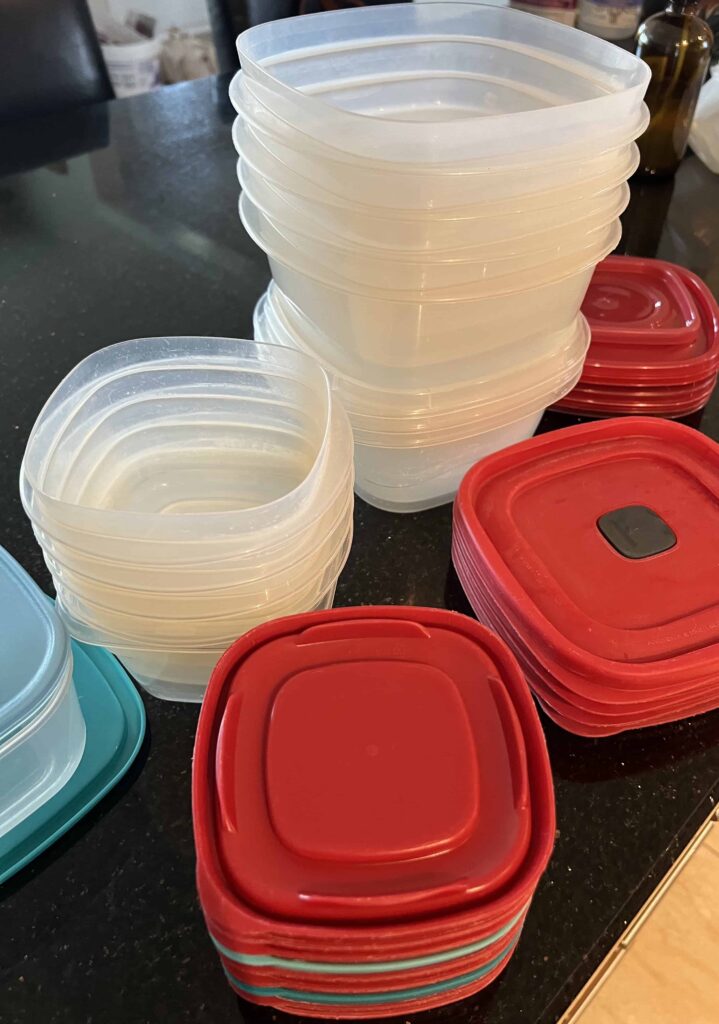
The same goes for putting warm liquids such as coffee or tea in a plastic water bottle or to-go mug, using plastic spatulas and spoons while cooking food in a hot pan, or even bottle-feeding your baby.
One common ingredient in plastic products is bisphenol A (BPA). This industrial chemical has been used since the 1950s and is especially recognized as an endocrine disruptor.
BPA can be acquired through your digestive tract (from food and liquid), respiratory tract (inhalation) or dermal contact (skin absorption).
A recent study states that BPA exposure and its estrogen-like, anti-androgen effects have been shown to cause multi-tissue/organ toxicity and damage to the immune, reproductive and neuroendocrine systems. Additionally, BPA has been found to induce carcinogenesis (development of cancer) and mutagenesis (genetic mutations of cells) in animal studies.
CDC Scientists have estimated that more than 92 percent of Americans have BPA in their bodies, and the highest levels are typically found in children.
Heather Patisaul, American Scientist
This is huge. It shows just how serious chronic exposure to BPA and plastic products can be to one’s health.
In 2021, researchers found the first scientific proof of microplastics in human placentas—in both the maternal and fetal portions. This means microplastics are transferrable from mom to baby and accumulate in human tissues and organs!
So, as you can see, going as plastic-free as possible is a huge deal.
Here’s what to get rid of ASAP:
- Plastic food storage containers for glass or stainless steel
- Plastic cups & reusable water bottles
- Plastic utensils: spatulas, spoons, ladles, tongs, measuring cups
- Baby bottles & soothers
- Cling wrap
Get A Wooden Cutting Board & Utensils
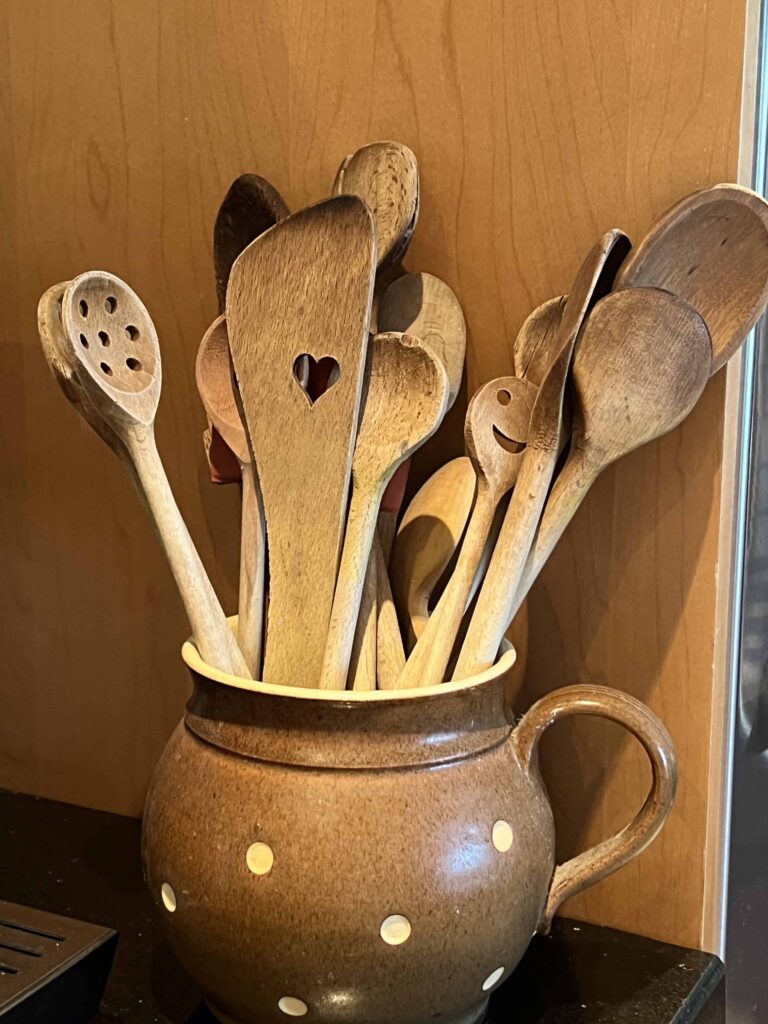
Along with ditching plastics, get yourself a wooden cutting board and utensils.
Both of these products directly interact with the food you eat during preparation and cooking and have the potential to come into contact with microplastics.
Here’s a close-up picture of what happens every time you cut, chop and slice anything on a plastic cutting board – tiny plastic fragments mixing in your food!
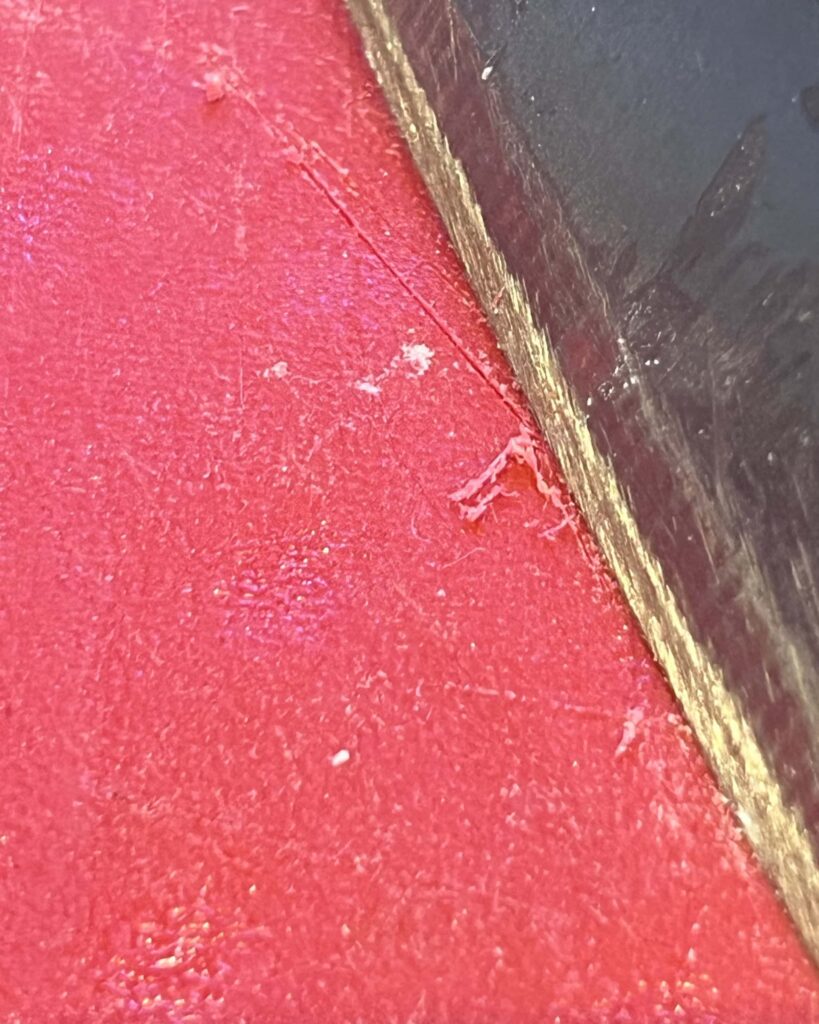
Throw it all out!!
Safe Cookware
Have any ‘non-stick’ pans, pots and baking sheets in your home? Throw ’em all out.
Teflon, A.K.A polytetrafluoroethylene, is a ‘non-stick’ coating made from a mixture of chemicals called PFAs, such as perfluoroalkyl and polyfluroalkyl substances. These chemicals have been studied for decades, and exposure to PFAs has been linked to cancers, hormone disruption, reproductive issues and other health conditions.
The issue with these chemicals is that they are accumulative and non-biodegradable, making them toxic to both humans and animals. Toxicologists have found PFAs accumulated in major organs such as the liver, gall bladder and thyroid gland.
Ditch your toxic cookware for healthier alternatives such as:
- Stainless steel
- Cast Iron
- Ceramic
Purify Your Water
whole-house filtration systems or cheaper portable alternatives like
fridge filters – moldy (picture of mine) + how to clean it vinegar
Safe, healthy drinking water is essential to our health and body functioning.
Sadly, many municipal water supplies are heavily contaminated with heavy metals, chlorine, fluoride, trace pharmaceuticals and other bacteria.
If you don’t have a well, I would encourage you to install a water filter. You can find whole-house filtration systems so that all of your taps and faucets have safe, filtered water. However, these can get quite expensive.
Another option is a portable reverse osmosis water filter like the AquaTru Water Purifier. This water purifier filters out 15 times more chemicals and contaminants than regular pitcher filters—toxins, hormones, microplastics, heavy metals—all of it! It’s 100% portable, with no plumbing installation required, so you can store it anywhere in your kitchen and even bring it with you on short trips so that you always have safe and healthy drinking water!
Eat Whole Foods
Food is so heavily processed nowadays that I don’t even think you can call it food anymore. Preservatives, stabilizers, gums, flavouring, artificial dyes, and sweeteners are everywhere.
Learning to read labels has never been more important, especially if you want to eat nutritious foods to support your health and well-being.
Stick to whole foods such as fresh vegetables, fruits, grass-fed meats and dairy, unrefined grains, and ditch all the processed pre-packaged items.
Living Room
Your living room is the heart of your home, where you relax, entertain guests, and spend quality time with loved ones. Here are five practical tips and strategies to detoxify your living room and improve indoor air quality to create a healthier space for you and your family to enjoy.
Leave Shoes At The Door
Many cultures already do this, but for my American friends – leave your shoes at the front door!
Wearing outdoor shoes around the house can bring in all sorts of toxins, pollutants and allergens into your home. Leaving your shoes at the door helps detoxify your home in three ways:
- Reduces the amount of toxins coming in
- It helps maintain healthy air quality
- Preserves cleanliness
Shoes can pick up a variety of toxins and pollutants from outside, including pesticides, heavy metals, bacteria, and allergens. Removing shoes at the door prevents these contaminants from being tracked into your home, reducing your exposure to them.
Many environmental toxins and pollutants can become airborne particles that settle on floors and carpets. Leaving shoes at the door prevents these pollutants from being dispersed throughout your home, helping to maintain better indoor air quality.
Leaving your shoes at the door is a simple yet effective way to minimize the introduction of toxins and pollutants into your home, promoting a healthier living environment.
Avoid Synthetic Fragrance
I’ve always been keen on having a home that smells fresh and welcoming. But here’s the kicker: many of the air fresheners and scented candles we adore are loaded with synthetic fragrances.
These fragrances might smell heavenly, but they’re loaded with toxins like synthetic fragrances and VOCs that can harm our health. That doesn’t mean you can’t have a nice-smelling home ever again. Instead, it’s about finding natural ways to keep our homes smelling great.
So, if you’re still using bath and body works candles, wall plug air fresheners, deodorizing sprays or reed diffusers, it’s time to throw ’em out!
Two natural ways to keep your home smelling great:
- Essential Oils
- DIY Potpourri
Ever thought about simmering a pot of water with cinnamon and cloves? It’s a natural air freshener! Let’s not forget about essential oils, either. A few drops of lemongrass oil in a diffuser can transform a room.
So, the next time you’re looking to freshen up your home, consider these alternatives. They’re safer bets for getting rid of chemicals and experiencing the joy of a natural home detox.
Add Air Purifying Plants
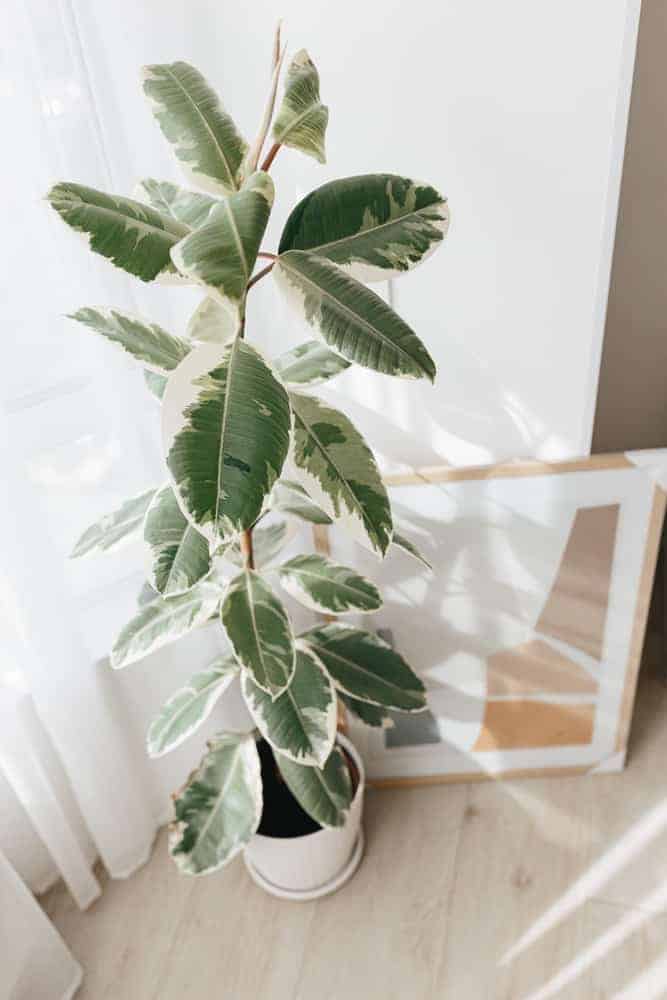
Certain plants can help purify the air in your home, removing toxins like benzene, formaldehyde, xylene, trichloroethylene and carbon monoxide. Some species can also reduce allergens such as pollen, mold spores and even dust mites.
This helps improve your house’s air quality in a fun, natural way!
Examples of great air-purifying plants:
- Snake plant
- Spider plant
- Peace lily
- Boston fern
- Rubber plant
- Aloe vera
- Bamboo palm
These air-purifying plants are beautiful additions to your home and help create a healthier and more enjoyable indoor environment by removing harmful toxins and pollutants from the air.
I’ve discovered that indoor air quality is crucial. It affects everything from sleep quality to daily energy levels. Grab yourself some plants!
Open Your Windows
Opening your windows daily is one of the simplest ways to bring fresh air into your home, ventilate your space, improve air quality, and regulate moisture.
Opening windows allows fresh outdoor air to circulate through your home, helping to flush out indoor air pollutants such as volatile organic compounds (VOCs), allergens, and mold spores. Proper ventilation reduces the concentration of these pollutants, promoting better indoor air quality.
Outdoor air often contains beneficial elements such as ozone and negative ions, which can help purify indoor air by neutralizing odours and airborne particles. Opening windows allows these natural air purification processes to occur, improving indoor air quality for free!
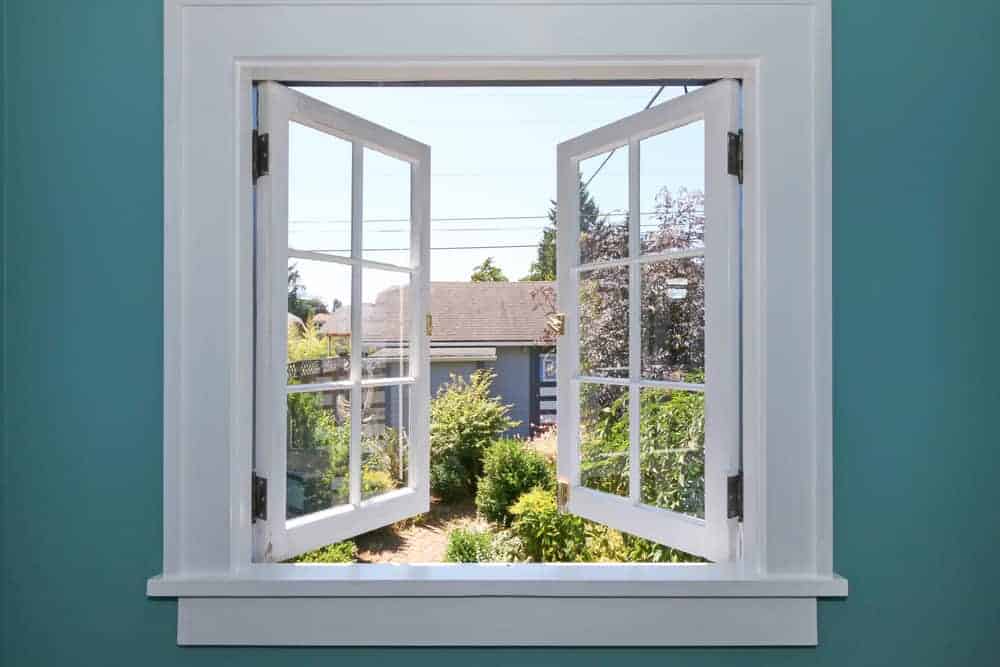
Proper ventilation in your home also helps control indoor humidity levels by allowing excess moisture to escape. High humidity can lead to mold and mildew growth, which can negatively impact indoor air quality and pose health risks. Opening windows is an easy way to help regulate moisture levels and prevent these issues.
On top of this, allowing in fresh air and sunlight is a great way to boost your mental and physical well-being! That feeling of sunlight streaming through your windows while you breathe in fresh air is a serotonin boost in itself, right?
Vacuum Often
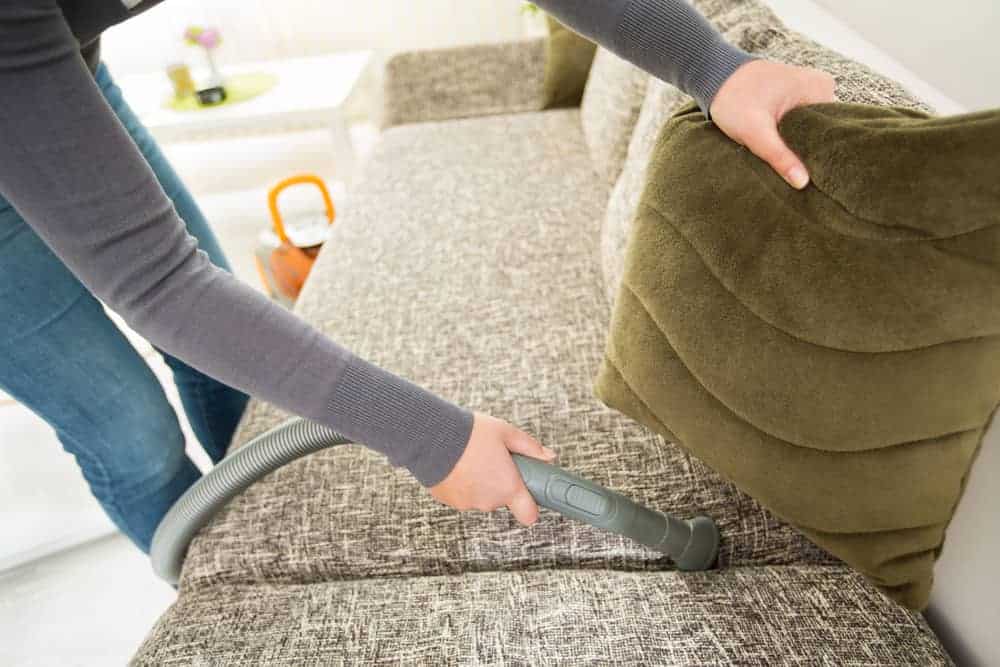
Dust can accumulate quickly in homes, containing various allergens such as pollen, pet dander, and dust mites. Vacuuming regularly helps to remove these allergens from carpets, rugs, and upholstered furniture, reducing the risk of allergic reactions and respiratory problems.
No matter how often you clean, dust, allergens, and debris constantly accumulate in your home. With my furry Australian Shepherd, I feel like I vacuum every day, yet my vacuum container ends up full each time. It’s crazy!
Indoor air can also contain pollutants such as lead, pesticides, and flame retardants, which settle on surfaces and carpet fibers. Vacuuming helps remove these pollutants from your home, improving indoor air quality and reducing exposure to harmful substances.
Mold spores can also settle in carpets and upholstery, especially in areas with high humidity or moisture. Regular vacuuming helps to remove mold spores and prevent mold growth, reducing the risk of respiratory issues and other health problems associated with mold exposure.
You’ll want to buy a vacuum with a strong HEPA filter for an effective clean. These vacuums have highly efficient filters that capture much smaller particles than regular vacuum filters.
This can be especially helpful for people with allergies.
Bedroom
Your bedroom should be a safe sanctuary that promotes rest and healing, not a place of toxic gasses and irritating chemicals!
Declutter
Decluttering your room is a simple way to reduce dust accumulation and make cleaning easier.
Clutter tends to collect dust, pet dander, and other allergens, contributing to poor indoor air quality. Removing clutter means fewer surfaces available for dust and allergens to accumulate, leading to cleaner air and a healthier living environment.
Clutter can also create pockets of moisture and darkness where mold and mildew thrive. By organizing your home, you eliminate these hiding spots and make it easier to identify and address moisture issues, reducing the risk of mold growth.
Get An Organic Mattress
Did you know conventional mattresses often contain synthetic materials treated with harmful chemicals such as flame retardants, pesticides, undisclosed fragrance and volatile organic compounds (VOCs)?
These chemicals can off-gas over time, contributing to poor indoor air quality, leading to respiratory issues, allergies, and other health problems. You don’t want to be breathing in chemicals for hours every night!
On the other hand, organic mattresses are made from natural materials such as organic cotton, wool, and latex, and they are free from toxic chemicals, making them safer for you and your family to sleep on.
Organic materials such as cotton and wool are naturally hypoallergenic and resistant to dust mites, mold, and mildew. This can benefit individuals with allergies or sensitivities, reducing the risk of allergic reactions and providing a cleaner and healthier sleeping surface.
Look for mattresses that have earned the EWG VERIFIED mark. This certification means that the product meets stringent health standards and is free from EWG’s chemicals of concern.
Pro Tip: Vacuum your mattress regularly. Yes, vacuum! It helps remove dust, allergens, and mites.
Wash Your Bedding
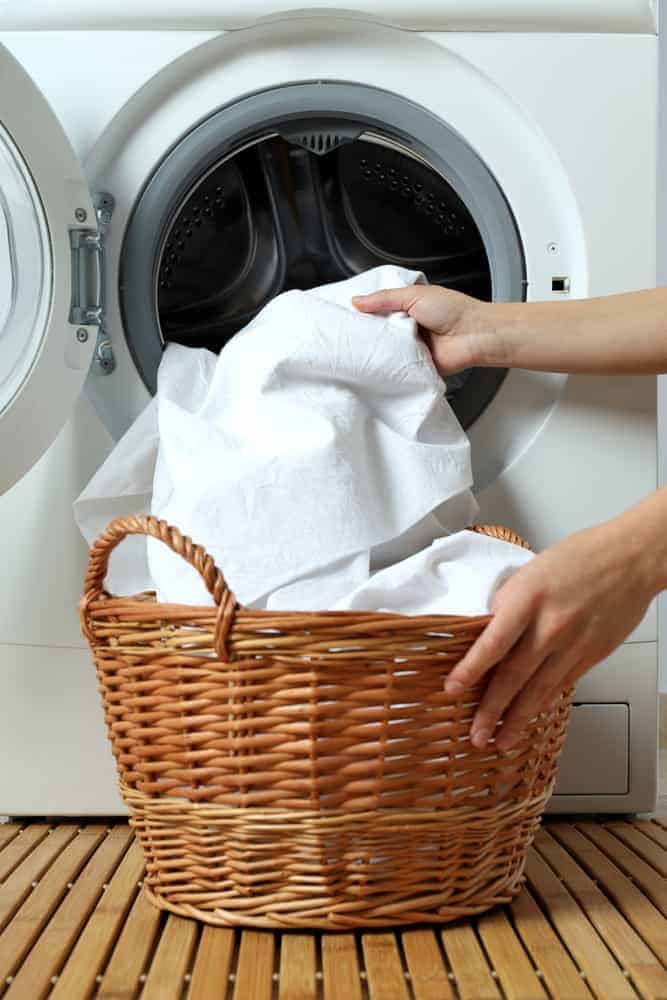
Please tell me you wash your bedding once a week… Yes?
Many people are guilty of this, but I can’t stress enough how important it is to launder your bedding regularly.
Just like your mattress, your bedding, including sheets, pillowcases, and duvets, can accumulate allergens such as dust mites, pet dander, and pollen over time. Regularly washing bedding helps remove these allergens, reducing the risk of allergic reactions and respiratory issues and promoting better indoor air quality.
Bedding can also harbour bacteria, germs, and other pathogens that can cause illness and infection. Washing bedding regularly in hot water kills bacteria and viruses, helping to prevent the spread of illness and maintain a clean sleeping environment.
Choose Organic Bedding
Conventional bedding materials, such as synthetic fabrics and foam, often contain harmful chemicals like formaldehyde, flame retardants, and volatile organic compounds (VOCs).
These chemicals can release gasses over time, leading to indoor air pollution and potential health risks.
I mean, think about it. Your mouth and nose are on your pillow all night. You don’t want to be breathing in toxic chemicals every night!
Opt for natural bedding materials such as cotton, linen, wool, and feather down. These materials are free from synthetic chemicals, breathable, and hypoallergenic, making them safer and healthier choices for your home.
Wear Natural Fabrics
Did you know your clothing could be making you sick? I sure didn’t. When I started my detox journey, I was SHOCKED at what kind of an impact the materials in your clothing could make.
Commonly used synthetic fabrics such as acrylic, nylon and polyester are made from petroleum-based fibers that can off-gas chemical additives and contribute to air pollution in your home.
When you wear these clothes, your respiratory tract and skin are exposed to these toxins!
Natural, non-toxic fabrics to switch to:
- Cotton
- Linen
- Hemp
- Bamboo
- Silk
- Wool
Bathroom
Use Non-Toxic Personal care Products
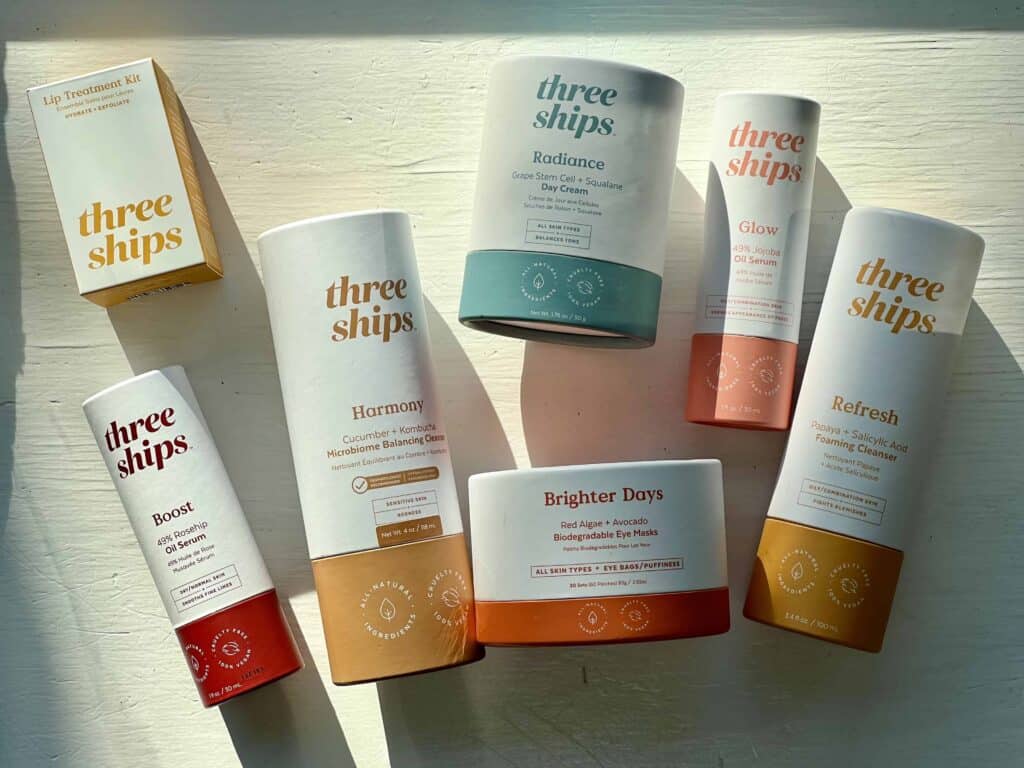
Many conventional personal care products contain synthetic chemicals such as parabens, phthalates, sulfates, and artificial fragrances, which have been linked to various health concerns, including hormone disruption, allergies, and skin irritation.
By choosing non-toxic alternatives made with natural and organic ingredients, you reduce your exposure to these harmful chemicals and support your overall health and well-being.
Non-toxic personal care products are often formulated with gentle, nourishing ingredients that are less likely to cause skin irritation or allergic reactions. By using these products, you can help to maintain the natural balance of your skin, reduce the risk of irritation and inflammation, and promote healthier, more radiant-looking skin.
My favourite non-toxic alternatives include Three Ships Beauty and using tallow as moisturizer!
Keep Mold Away
Mold can release spores and mycotoxins into the air, contributing to poor indoor air quality and triggering allergic reactions and respiratory issues such as asthma.
Always tackle mold right away and clean your shower/tub often to prevent mold growth!
Ventilate
Mold and mildew thrive in damp and humid environments and can quickly spread on surfaces such as shower tiles, bathtubs, walls, ceilings, and grout.
Properly ventilating your bathrooms is crucial to remove excess moisture from the air, reducing the risk of mold and mildew growth.
You can do this by installing a bathroom fan or simply opening your windows.
Replace Your Shower Curtains
Many plastic shower curtains are made with polyvinyl chloride (PVC), which can release toxins such as phthalates and volatile organic compounds (VOCs) into your home air, polluting your air quality.
Additionally, plastic shower curtains can trap moisture and create a breeding ground for mold and mildew, especially in humid environments like bathrooms.
Non-toxic alternatives:
- Cotton or linen fabric curtains
- PEVA (Polyethylene Vinyl Acetate)
Install A Shower Filter
Public water often contains harmful chemicals and contaminants like chlorine, heavy metals, medication residues (like birth control), and VOCs.
Many municipal water supplies are treated with chlorine to disinfect the water and kill bacteria. While chlorine is effective at killing harmful pathogens, it can also have negative effects on your skin and hair, causing dryness, irritation and damage.
These chemicals in tap water can vaporize and be inhaled as steam during a shower, leading to respiratory issues such as asthma and allergies.
Installing a shower filter is an easy way to help filter out and protect yourself and your health from these toxins.
Laundry Room
Your laundry is likely one of your home’s biggest sources of toxins – and it’s not your fault! Commercial laundry detergents and scent products are potent chemical concoctions with dozens of harmful and irritating ingredients. From formaldehyde in detergent to the irritating fragrances in dryer sheets – detox your laundry in four steps.
Non-Toxic Laundry Detergent
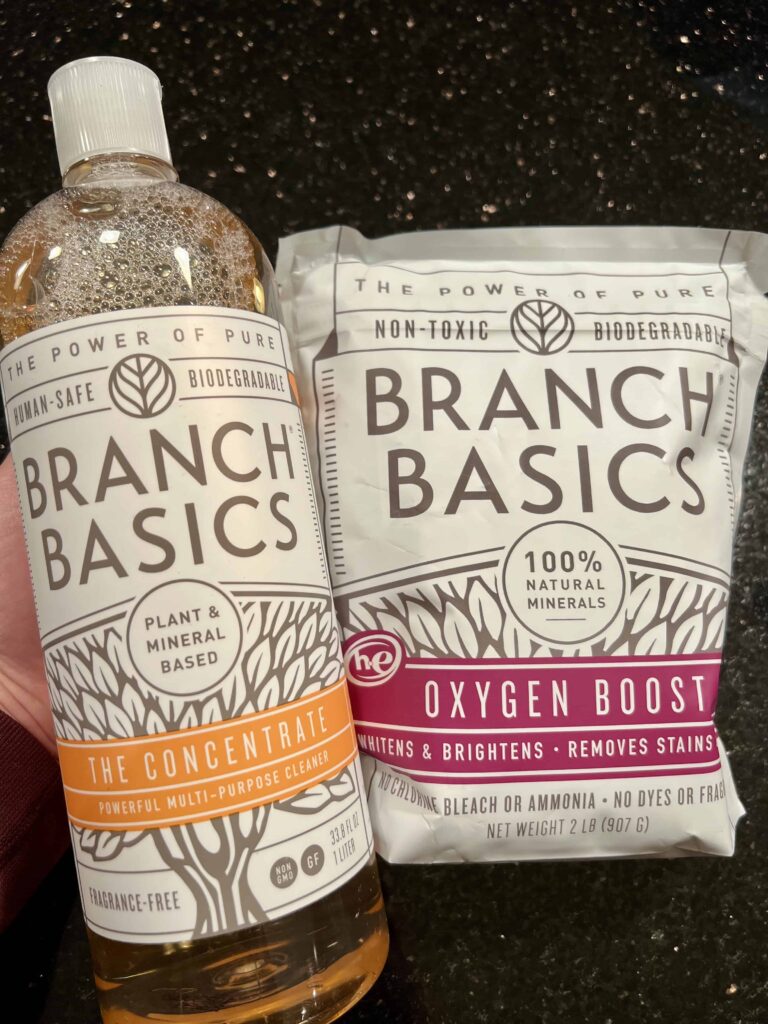
Conventional laundry detergents contain a mixture of allergens, irritants, and even carcinogens that can trigger skin reactions, respiratory issues, allergies, nausea, headaches and much more.
Read through a list of common harmful ingredients used in conventional laundry detergents.
Ditch toxic laundry detergent and support your health and well-being with a natural, toxin-free alternative or learn to make your own.
If you need help finding a safe swap, here are the 5 Best Non-Toxic Laundry Detergent Brands I’ve tried and tested. They’re effective at cleaning, 100% toxin-free and most importantly, safe for your health.
Skip The Fabric Softener
Fabric softeners are potent sources of synthetic fragrance which can wreak havoc on your health. Instead of fabric softeners, add a TSP of white vinegar to your laundry load as a natural fabric softening option. It has the same effect, with no risk of toxins.
Natural Dryer Sheet Alternative
Dryer sheets are also heavily fragranced, leaving your clothes perfumed to the nines. While these fragrances may smell nice momentarily, wearing them, breathing them in all day, and having them sit on your skin is a recipe for disaster.
Skip the synthetic dryer sheets and opt for natural wool balls! You can either buy them online or make your own. Add a couple of drops of essential oil to your wool balls and add them to your laundry before starting your dryer.
Wool balls are a super simple, natural alternative to dryer sheets. They give your clothes a fresh, mild scent that won’t cause headaches, nausea, or allergies.
Air Dry In the sun
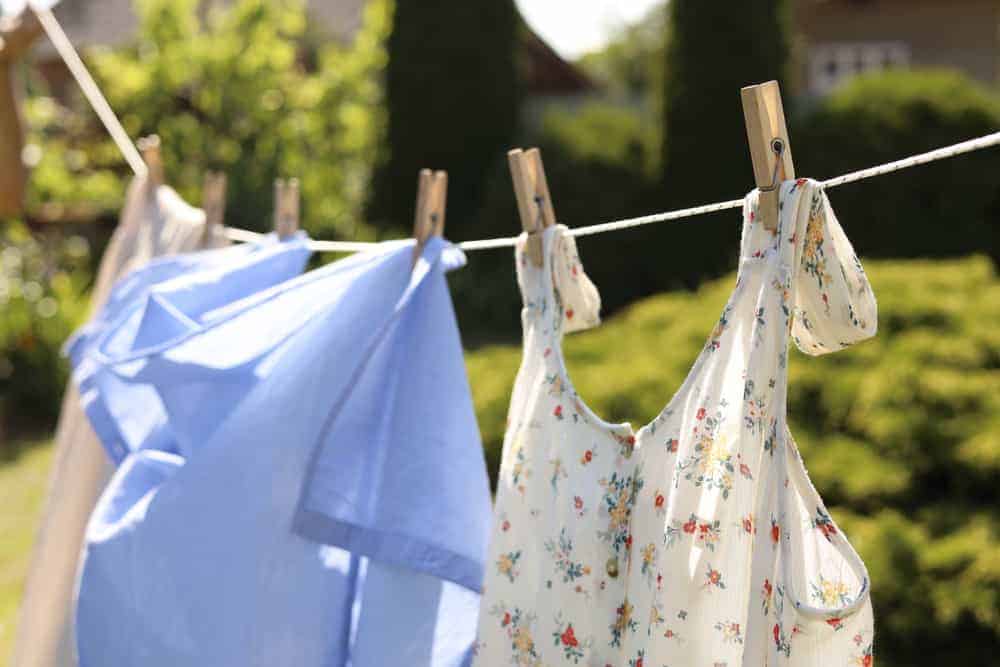
Drying laundry in the sunlight has many benefits! Clothes dried outdoors in the sun often have a fresh, clean scent that artificial fragrances can’t replicate. Sunlight helps to kill bacteria and odour-causing microbes, leaving your clothes smelling naturally fresh and clean.
Sunlight (UV light) has natural sanitizing properties, helping “detox” your laundry without the need for harsh, toxic detergents.
Deep Clean Your Washing Machine
Washing machines are not usually at the forefront of our minds when we clean our homes. But they can actually harbour the most toxins and mold!
They clean our laundry, removing dirt, dust, debris, bacteria and other allergens, some of which stays behind in the nooks and crannies.
Try looking into the rubber door frame; see any dust or mold? Chances are, yes.
Clean your washing machine at least once weekly with a non-toxic all-purpose spray or this DIY orange vinegar cleaner. You don’t need harsh products – a simple cleaner, or even baking soda and vinegar will do just fine.
Campaigns and Certifications to Know
Finding safe, non-toxic products can be challenging because companies try to “green-wash” their products using words like “eco,” “green,” and “natural.”
Thankfully, certifications, like the EWG VERIFIED mark, make this a little easier for us. EWG has a product search tool that lets you search for any cleaner, laundry detergent, or skincare product and see a health and safety rating and a complete list of ingredients.
There’s also MADE SAFE, the only human-health certification system. On its website, it offers lots of certified, non-toxic, all-natural products, so you can find ideas right away.
Creating A Non-Toxic Home
I don’t know about you, but living in a space as free from toxins as possible feels incredibly refreshing.
One important thing to remember is that it’s almost virtually impossible to go completely non-toxic in today’s world, and that’s okay. I hope this guide helps you make small changes in your home that work to support your health and well-being.
However, life should be enjoyed, so although it is important to live as low-tox as possible, remember to enjoy your life, too!
How did you detox your home?
